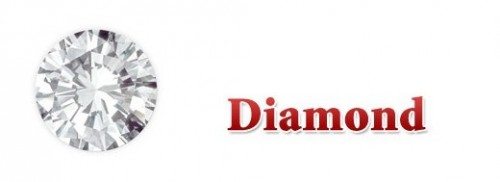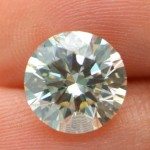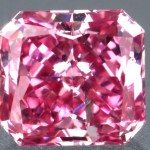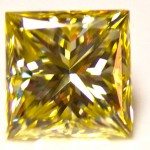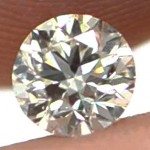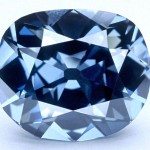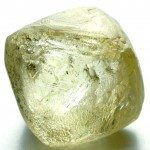Contents
Gemstone Information
The word Diamond origin from the Greek word “adamas” that means “unbreakable” and “invincible” referring to the extraordinary diamond hardness positioned at the first place of the Mohs minerals hardness scale.
It is chemically composed by carbon, Diamond is the hardest natural stone on Earth, it is considered the principle precious stone duo to its exceptional hardness, but also for its high brilliance (refractive index) and its remarkably high dispersion rate of visible light also commonly called “fire”.
People usually think at diamond like a white colorless stone, but natural Diamonds can show a nice range of colors, from yellow, blue, red, brown, orange, pink, these color variety are usually called Fancy Diamonds, where yellow and brown are not rare, the red color variety of Diamond is the rarest.
Red Diamonds are also considered on of the rarest gemstone of the world.
Diamonds are formed under extreme pressure and at very high temperatures, at depths of hundreds kilometers. To create a natural Diamond occurs over 1 billion years, until they appears on surface through volcanic eruptions of a rare type of magma called kimberlite.
Natural Diamond is an excellent electrical insulator, Diamond is the ultimate abrasive because it can easily scratch any other stone, in past unpopular black diamond material was used for abrasive purpose, only recently black diamonds conquered a place in the jewelry world.
Roughly twenty percent of Diamonds mined are used in jewelry, as most are not suitable for gemstone use in jewelry.
The vast majority are either opaque and not gem quality, or are too heavily flawed.
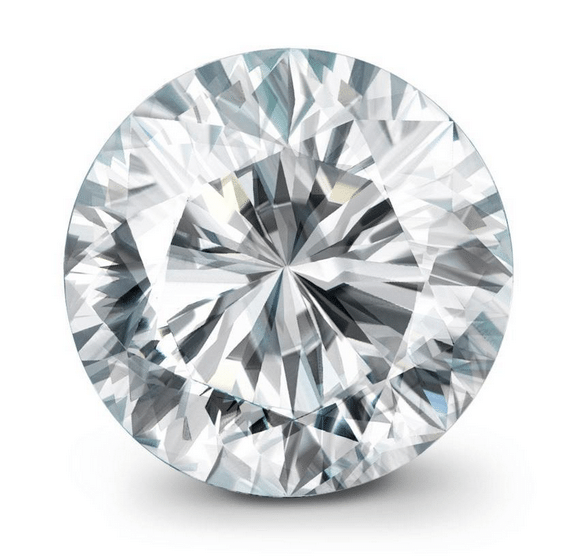
Diamond Healing Properties
Diamond in past was considered a talisman, which possess many supernatural and metaphysical qualities, by the ancient citizens of India, where the first diamonds were discovered.
The most powerful stones were thought to be naturally occurring octahedrons of exceptional clarity which exhibited a strong light reflection.
Diamond would bring the owner power, wealth, everlasting youth and good fortune.
Diamond is the April month birthstone and is usually combined with other stones to amplify their properties.
Treatment
Duo to its high value and popularity may be artificially enhanced in several ways.
Some Diamonds are drilled with laser, this techniques can be applied to enhance the stone clarity, removing from the internal crystal dark inclusions, generated cavities may artificially be filled with a glass filling.
Fancy Diamonds may also be synthetically colored by irradiation or exposed to high temperature/pressure treatment to enhance color saturation.
Honest diamond seller must disclosure this kind of treatment and enhancement.
Origin and gemstone source
Diamonds occurs in many different countries, but the major diamond source are located in: Russia, Africa (Botswana, Namibia, Ghana, Congo, Guinea), South Africa, Australia, Canada, India.
Optical Effect
This faboulous stone present a adamantine luster and show an incredible brilliance and fire, often found with transparency and eye clean clarity, available in a huge range of colors, Diamond, considered also a very durable gemstone duo to its high hardness, is one of the most desirable gemstone.
Images and Photos
Uses
The most used gemstone in jewelry, with its unique characteristics is also a powerful stone for other uses, it is often used in optical field, or abrasive purpose (remember only a diamond can scratch another diamond).
Usually found with transparency and eye clean clarity, white colorless diamonds are faceted in all the most popular shape like: pear, oval, emerald, asscher, trilliant, but the most common and appreciated shape is the round brilliant faceted cut which maximize the natural beauty of this amazing stone.
Natural fancy diamonds are also loved by customers but they are rare and very expensive so they are mainly used in high end jewelry.
Only recently the gemstone market introduced the black polished diamonds, the cheaper diamond variety, but also loved by consumers, in fact some jewel companies starts a huge black diamond jewel production with awesome results on the market.
Care and Cleaning
Considered the most durable gemstone it require very little maintenance, they are typically insensitive to chemical reactions and high temperatures but would be a great idea not expose to aggressive chemicals like acids or directly fire or expose to high temperatures your diamonds.
Steam machine and ultrasonic cleaner are considered safe for natural Diamonds, but be careful if you Diamonds was treated. Laser drilling diamonds filled glass after exposure to acid can remove the filler and reveal the cavities left by laser.
We suggest to clean your diamond with soapy water and soft cloth.
Remember to store your diamonds separately from other gemstones which can be easily scratched by your diamond.
High hardness is not a synonymous of tenacity or indestructibility, your diamond can easily broke or chip if hit, so please be careful with your diamond.
Scam and Fraud
Natural Diamonds are often imitated or simulated by other stones with similar appearance.
In nature occurs some natural gemstones that can be easily confused with Diamond, like: natural Zircon, white colorless Topaz and Sapphire (Leuco Sapphire) or Goshenite.
The most common scam of Diamond is represented by synthetic Diamonds or synthetic imitation like Cubic Zirconia, YAG, Moissanite, Strontium Titanate.
Typical inclusions
Internal flaws in this kind of gemstone are commonly found, internal flawless diamonds are rare and expensive, observing diamonds at microscope you can spot some typical inclusions that can help you to recognize a natural diamonds to a synthetic or imitation stone.
Typical Diamond inclusions are: black dots composed by carbon (graphite), needles and cloud inclusions, feathers inclusions and fingerprints, but also internal fracture healed, pinpoints, guest minerals and more.
Gemological Info
- Mineral family: Diamond (crystallized carbon)
- Crystal: Isometric (cubic, octahedral)
- Density: 3.50 – 3.53
- Hardness: 10
- Refractive index: 2.417 – 2.419
- Optic Character: Isotropic
- Color: White Colorless (Fancy: pink, yellow, brown, black, gray, blue, green, red)
- Cause of color: Many (boron for blue, hydrogen for gray, nitrogen for yellow)
- Luster: Adamantine
- Clarity: Transparent (from FL/IF to I)
- Fluorescent: Variable (inert or strong)
- Cleavage: Perfect
- Fracture: Concoidal
- Durability: Very High

